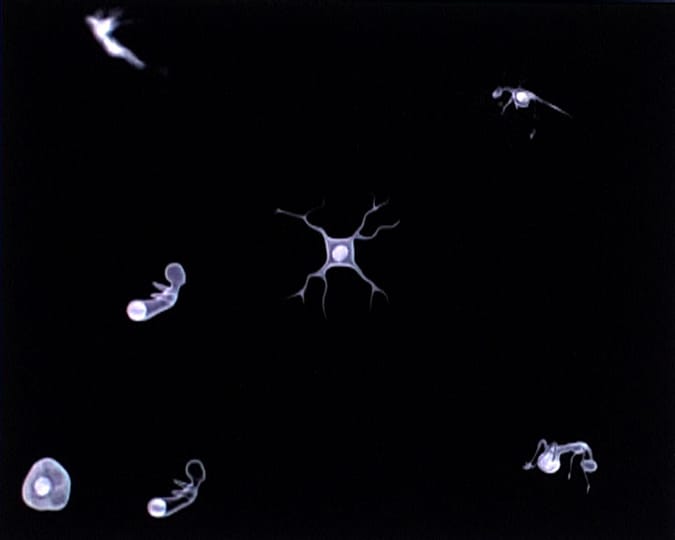Detailed Description
CORE CONCEPT : Each of us are dependent on our fellow humans. Despite our obvious differences we rely on each other culturally, physically and spiritually. Every act we make needs to be considered in relationship to all the others that it affects. This requires us to act with compassion, forgiveness and tolerance of others, however difficult this might seem.
Intimate Transactions examines these ideas through the metaphor of a dual-site virtual world which you, the other person and a family of virtual creatures inhabit.
It’s your choice how you interact, but whatever you choose to do, others will always suffer or prosper.
DETAILS:
Intimate Transactions creates an immersive, engaging, experience based upon developing intimacies both with another (unseen) person and a range of computational creatures, all of whom inhabit a common virtual space. Participants act as ‘catalysts’ or ‘multipliers’ within the space by fostering balance or imbalance depending on the ‘sensitivity’ with which they navigate and interact with the creatures. Through increasing intimacy with the other person and the shared virtual space participants begin to understand the effects they are having on this simplified ecology. They choose to shift their actions accordingly.
Each creature represents a different emotive force or tendency, eg conflict (an insect like form), torment (plant-like form), insatiability (human-animal form) permanence (a rock-like form) and change (ghostly form). They each contain a ‘landscape’ of imagery that is revealed when a participant transacts with them. The aim of the work is to understand the implications of undertaking different kinds of transactions with each creature through a process of taking images from them. Each creature reacts in different ways to this process and any action of taking images from a creature has repercussions that ripple throughout the entire system. Images taken from creatures may also be returned from where they were taken, but only through a collaborative process with the other participant. Each of these creatures and the human participants therefore have an integral part to play in the ‘balance’ of the world they inhabit. In turn the state of the world also has a direct affect upon each of these creatures. Participants may choose to act in ways that maintain or destabilise this web of interdependencies.
There are three virtual spaces in the work in which to explore:
The first space (Creature Space) is inhabited by a group of creatures. The participant on the interface is represented in this space by a ‘body avatar’ that is controlled by moving the Bodyshelf footboard. The other participant (in the other geographical space) is represented by a second body avatar to indicate where they are located in their own parallel world. Each creature is connected to all the others by an implied series of interrelationships (generated by a emergent spring mass model that indicates states of balance and imbalance). The balance of energies within the space (and hence the shape of the map) constantly changes because each creature has certain properties and characteristics which relate to and affect each other differently. Participants can choose to instigate a transaction with any creature by overlapping their body avatar so that the stomachs of both interlock. At this point the participant must lean backwards – initiating an intimate transaction.
The participant then enters a second space (Person to Creature Space) which holds images that belonging to each of the creatures. The participant is now represented by the circular body cursor that they move around using the bodyshelf back panel. The participant has dual control of this cursor with the creature he or she is transacting with. The ease with which it can be controlled depends on how much the creature assists or counteracts the participant. White outlined images belong to the creature the participant is transacting with and only these images can be worked up into different states and taken from the creature. These images collect in the middle of the screen.
The third space (Person to Person) is revealed when the participant instigates a transaction with the other remote participant. This is a shared space where both people can see which creature images they have taken and also which images the other participant has taken. In this mode they can choose to go through a collaborative process of returning these images to the respective creatures. Both remote participants have equal control of this circular white body cursor which means that they have to each tune into the other person's movements.





